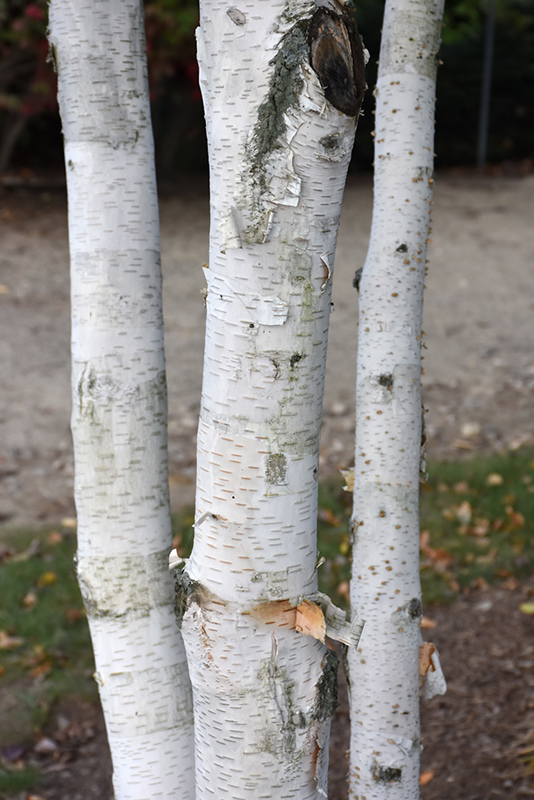Birch, Jacquemontii Betula utilis 'var. jacquemontii' Height: 40 feet Spread: 30 feet
Sunlight:
Hardiness Zone: 5a Other Names: White Bark Himalayan Birch Description: A rare and ornamental birch tree with smooth, unbelievably white bark, a shapely habit of growth and good fall color; a spectacular accent tree for the right locations. Ornamental Features Birch, Jacquemontii is primarily valued in the landscape for its decidedly oval form. It has dark green deciduous foliage. The pointy leaves turn an outstanding yellow in the fall. However, the fruit can be messy in the landscape and may require occasional clean-up. The smooth white bark is extremely showy and adds significant winter interest. Landscape Attributes Birch, Jacquemontii is a deciduous tree with a shapely oval form. Its relatively fine texture sets it apart from other landscape plants with less refined foliage. This tree will require occasional maintenance and upkeep, and is best pruned in late winter once the threat of extreme cold has passed. Gardeners should be aware of the following characteristic(s) that may warrant special consideration; Birch, Jacquemontii is recommended for the following landscape applications; Planting & Growing Birch, Jacquemontii will grow to be about 40 feet tall at maturity, with a spread of 30 feet. It has a high canopy of foliage that sits well above the ground, and should not be planted underneath power lines. As it matures, the lower branches of this tree can be strategically removed to create a high enough canopy to support unobstructed human traffic underneath. It grows at a medium rate, and under ideal conditions can be expected to live for 60 years or more. This tree does best in full sun to partial shade. It is quite adaptable, prefering to grow in average to wet conditions, and will even tolerate some standing water. This plant should be periodically fertilized throughout the active growing season with a specially-formulated acidic fertilizer. It is not particular as to soil type or pH. It is somewhat tolerant of urban pollution. This is a selected variety of a species not originally from North America. Special Attributes Early Spring 1 1/2 to 2 inch catkins appear and releases tiny seeds during summer and fall. Birch are susceptible to the Birch Borer. ![]()
![]()
![]()
![]()
![]()
![]()
![]()
![]()
![]()
![]()
![]()
![]()


